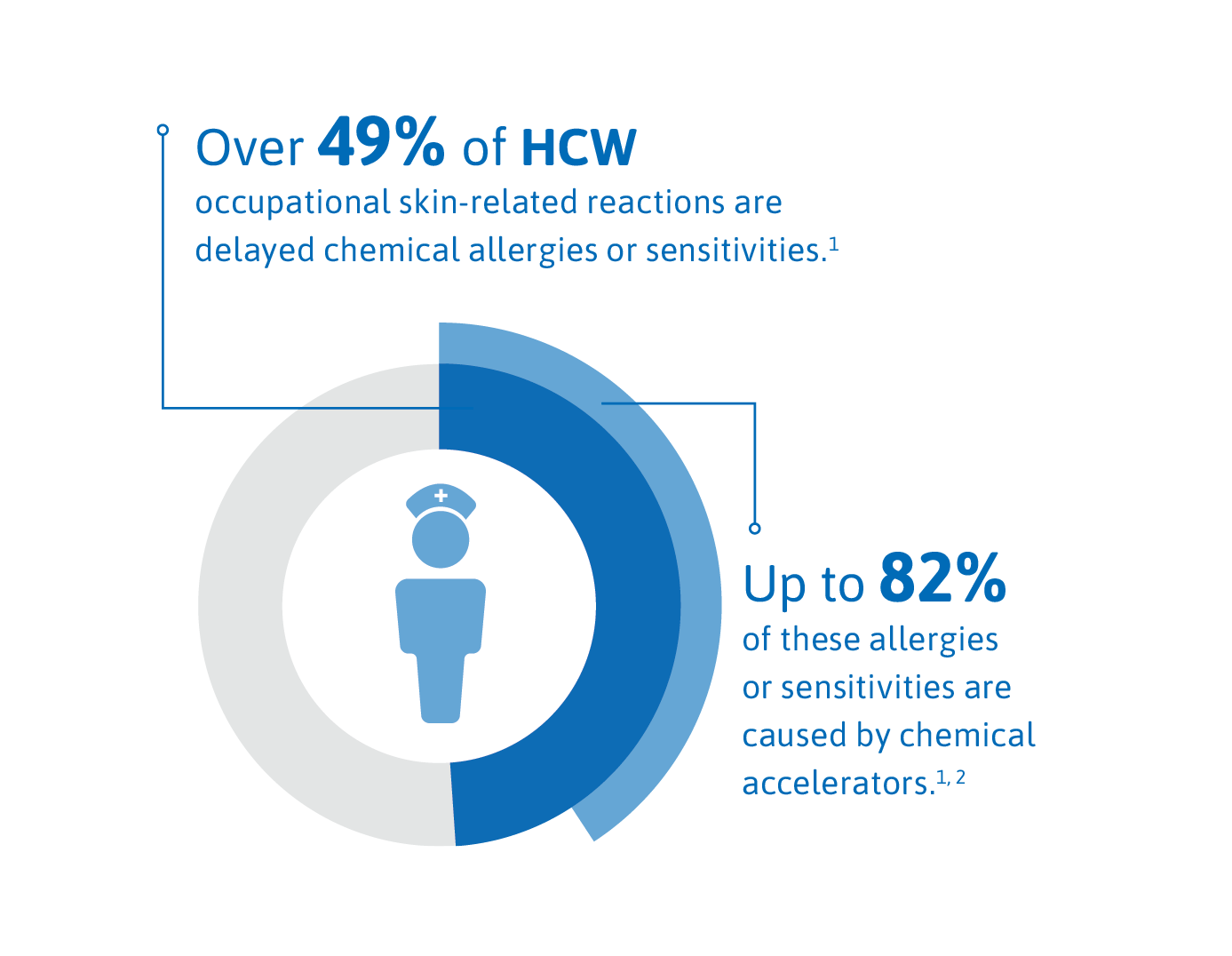Not all non-latex surgical gloves are the same. When choosing the non-latex glove for you or your hospital, it is important you know the difference among the types of non-latex surgical gloves available to help you decide on what best suits your needs for sensitivity, comfort and fit while eliminating Type I latex and significantly reducing Type IV chemical allergies and sensitivities.
Type I allergy is caused by natural rubber latex (NRL) and Type IV allergies are often caused by standard chemical accelerators used in the manufacture of gloves. Since the mid-1990s, the sensitization frequency of thiurams appear to be on the decline, while there are an increasing number of patch test reactions among healthcare workers to Diphenylguanidine (DPG) and standard carbamate mixes including Zinc Diethyldithiocarbamate (ZDEC) and Zinc Dibutyldithiocarbamate (ZDBC).
All non-latex gloves will help eliminate the risk to Type I latex allergy. But not all non-latex gloves offer the same allergy prevention to Type IV chemical allergies.

1. For advanced protection, use Ansell’s 100% PI gloves featuring our skin-friendly PI-KARE™ Technology where biologically-safer chemical accelerators known to remain in the glove and with better tolerance to skin are used.*
*Gloves made with PI-KARE Technology were tested for their dermatitis potential by a third-party lab in the United States using the Human Repeat Insult Patch Test (HRIPT) involving 200 human subjects as per the modified Draize Method. No sensitization was observed. Data on file.
2. All non-latex gloves will help eliminate the risk to Type I latex allergy. But not all non-latex gloves offer the same allergy prevention to Type IV chemical allergies. Check the chemical accelerator profile before you make your choice.